The Intel Broadwell Desktop Review: Core i7-5775C and Core i5-5675C Tested (Part 1)
by Ian Cutress on June 2, 2015 7:45 AM ESTProfessional Performance: Linux
Built around several freely available benchmarks for Linux, Linux-Bench is a project spearheaded by Patrick at ServeTheHome to streamline about a dozen of these tests in a single neat package run via a set of three commands using an Ubuntu 11.04 LiveCD. These tests include fluid dynamics used by NASA, ray-tracing, OpenSSL, molecular modeling, and a scalable data structure server for web deployments. We run Linux-Bench and have chosen to report a select few of the tests that rely on CPU and DRAM speed.
Due to our limited testing time and other issues, only the i7-5775C was processed in our Linux tests. These should be updated for Part 2.
C-Ray: link
C-Ray is a simple ray-tracing program that focuses almost exclusively on processor performance rather than DRAM access. The test in Linux-Bench renders a heavy complex scene offering a large scalable scenario.
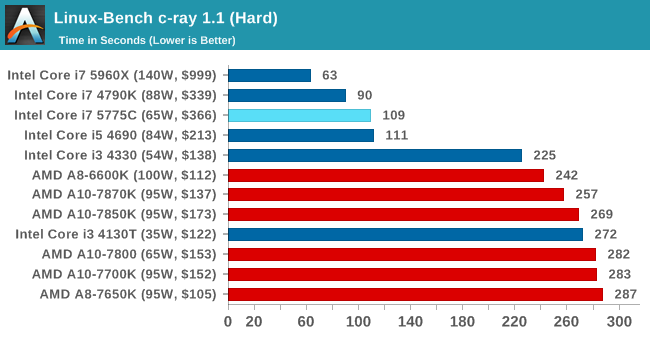
NAMD, Scalable Molecular Dynamics: link
Developed by the Theoretical and Computational Biophysics Group at the University of Illinois at Urbana-Champaign, NAMD is a set of parallel molecular dynamics codes for extreme parallelization up to and beyond 200,000 cores. The reference paper detailing NAMD has over 4000 citations, and our testing runs a small simulation where the calculation steps per unit time is the output vector.
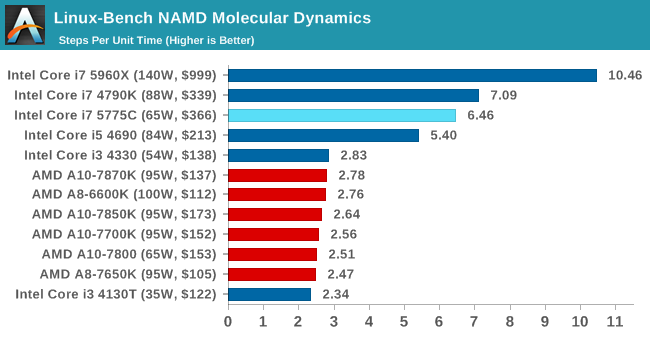
NPB, Fluid Dynamics: link
Aside from LINPACK, there are many other ways to benchmark supercomputers in terms of how effective they are for various types of mathematical processes. The NAS Parallel Benchmarks (NPB) are a set of small programs originally designed for NASA to test their supercomputers in terms of fluid dynamics simulations, useful for airflow reactions and design.
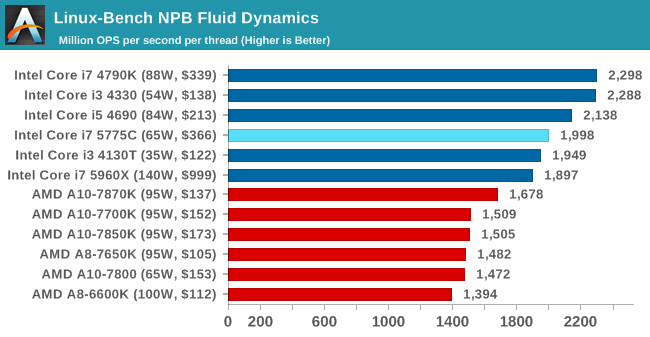
Redis: link
Many of the online applications rely on key-value caches and data structure servers to operate. Redis is an open-source, scalable web technology with a b developer base, but also relies heavily on memory bandwidth as well as CPU performance.
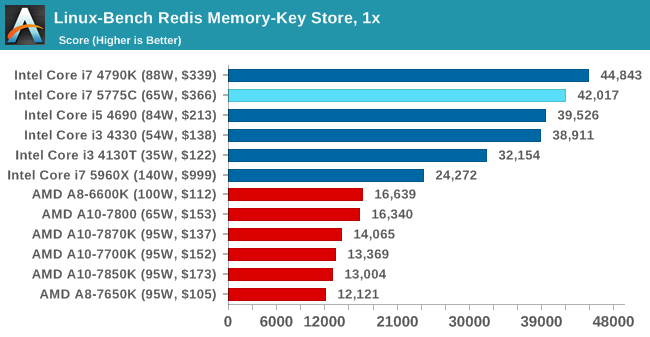
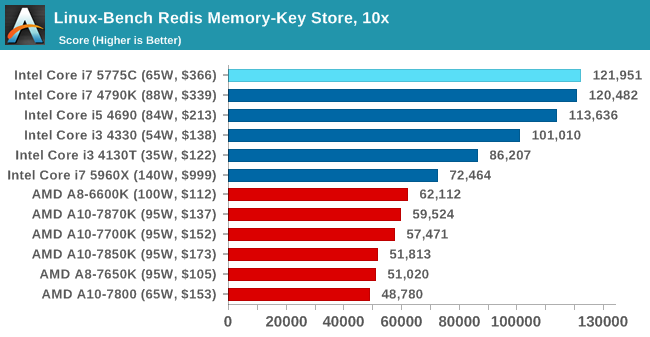
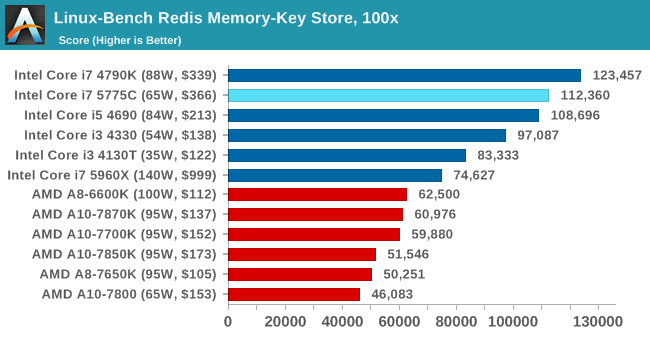










196 Comments
View All Comments
Zingam - Wednesday, June 3, 2015 - link
Well, nothing to see here! Move along, sir!Where is the Skylake?
ryrynz - Wednesday, June 3, 2015 - link
Ian, what driver was used? Intel just released a new one with some significant performance improvements (15.36.21.4222) Retest?Phartindust - Wednesday, June 3, 2015 - link
Please fix the graphs for GRID Min frames, or did the A10-7700k really beat everything else by 10fps?unityole - Thursday, June 4, 2015 - link
"due to time constraint we will save overclocking for part 2" care to explain why both you and tomshardware don't do OC? i have a feeling intel not allowing reviewers to do OC at first for sample, until at least few weeks or even months later.can't blame you though, need to continuously get sample from intel.
unityole - Thursday, June 4, 2015 - link
im extremely interested in OC, voltage used, power consumption and also performance is what we're after, before moving onto skylake.Notmyusualid - Thursday, June 4, 2015 - link
I'll second the request for identical-speed benchmarks too, thanks.albert89 - Thursday, June 4, 2015 - link
I've got to say I like what Intel has done to its iGPU side of the APU no matter how you read this review it actually doesn't look good for them. Overall Broadwell from these results seems to be between 1.5-3 times more expensive than AMD and if that doesn't both you, then its performance in the games above was between 1.6-6 points ahead while in one game beating AMD by 10 points (not good) while AMD beating Intel by 10 fps (nice). And don't forget we are comparing AMD (28nm) against Intel (14nm) which casts a not so flattering picture of Intel. And need I mention the latency gain over AMD, hardly to write home about by Intel. If your an all round user or a gamer the only thing you'll notice from Broadwell is the hole in your wallet.unityole - Thursday, June 4, 2015 - link
true that, most people here are for CPU performance though, doesn't hurt to have additional good IGPU in case of discrete dies on you, can still boot without dGPU and iGPU can still do things at 1080p.NvidiaWins - Thursday, June 4, 2015 - link
Literally no gain over Devils' Canyon.......zodiacfml - Friday, June 5, 2015 - link
Interesting. I could see a particular niche for this for users needing very good cpu performance and wants occasional gaming that is better than an entry level graphics card. Can't wait for overclocking results.I hope prices go down with Skylake's...